|
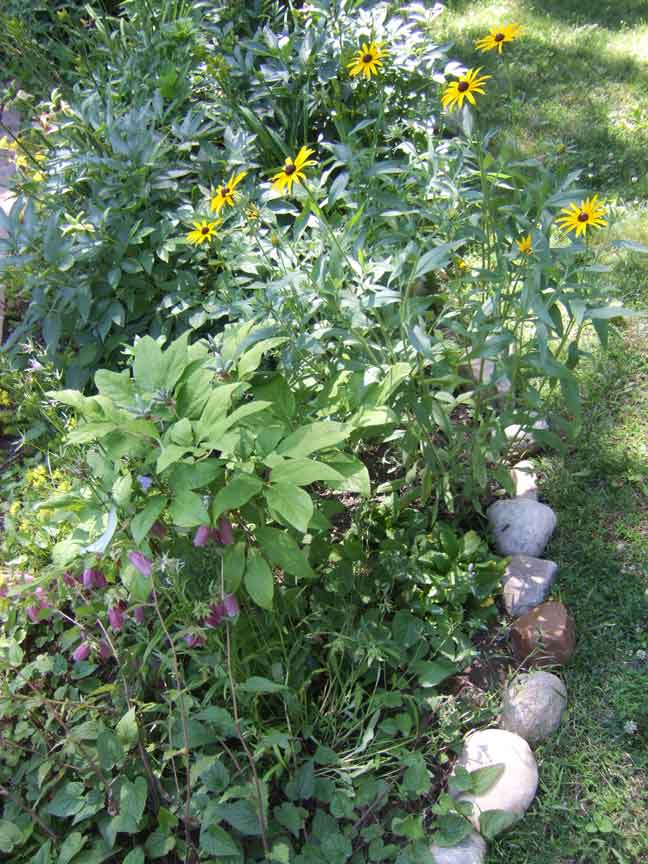
Paeonia obovata oppressed by rudebeckia
|
click on images for larger views 
The Darwinian gardener eradicating Anemone canadensis for compost
|
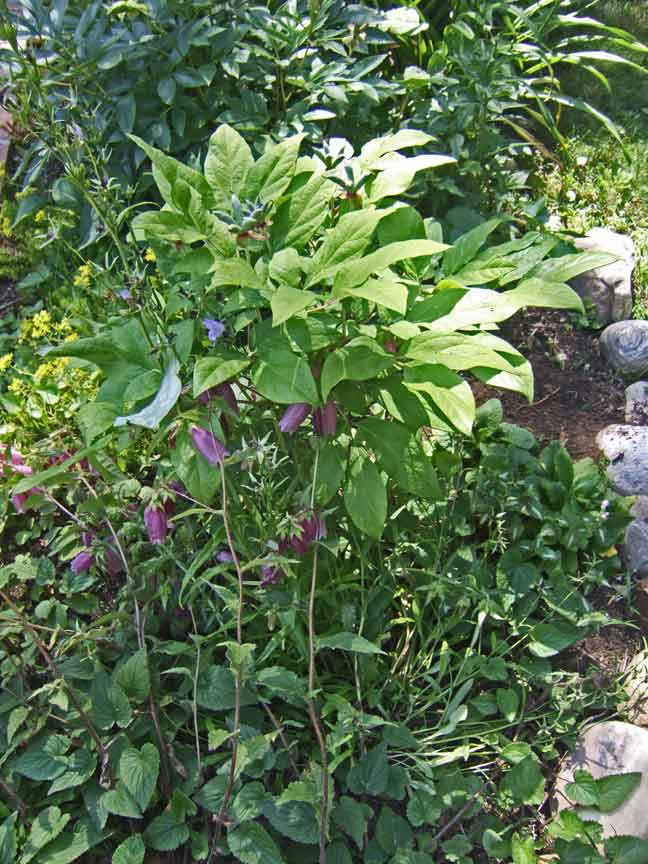
P. obovata liberata & setting seed (it grew from seed these seven years) eed
|
It was already six & time to be getting supper. But the Queen Anne’s lace looked more than ever daunting so I thought to take out a few more before eating. They pull up fairly easily. The yellowish white root looks a lot like parsnip. Can be eaten when young, says the internet. But they looked so hairy & dirty that I gave up on that.
Quickly got so many that I had to fetch the cart. It was starting to fill when I looked over again to the south border of the pool where one kind of rudbeckia had planted itself. It has sprung up all over, thanks to this wet season. I had been admiring its vigor, especially where it colonized a part of the bog that I had left for the plants to populate on their own.
Now though this rudbeckia was overshadowing my yarrows, which I got at the end of the season last year & have come back strongly, adding a delicate yellow, red, & white to that border. The overbearing rudbeckia has a long, tough stem, with long narrow leaves & a tiny flower, with short yellow petals around a small dark center. It also overshadowed a cousin, with shorter stems, longer in the petal & each petal with a reddish to russet tinge towards the center (like Rudbeckia hirta var. Cappuccino in one catalogue on line).
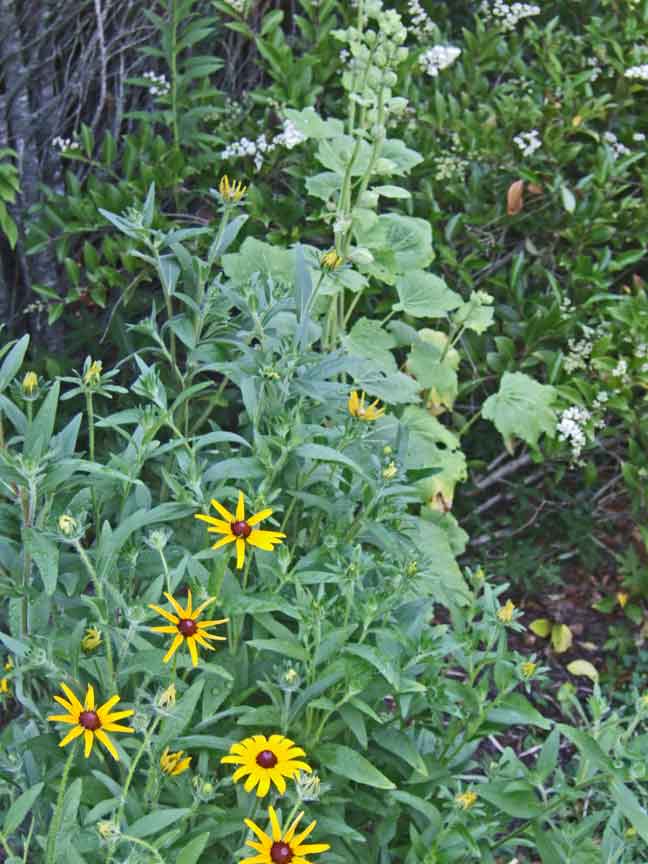 |
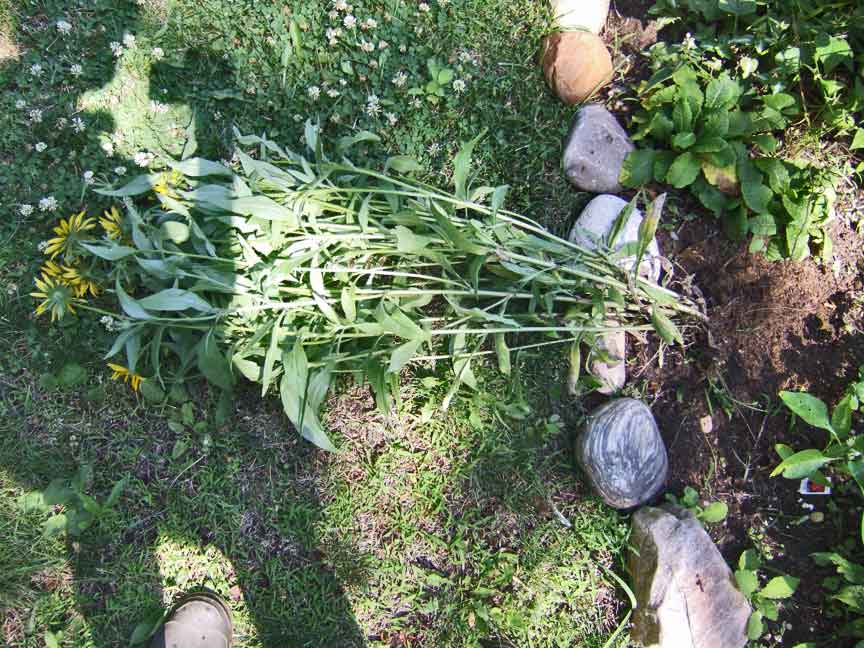 |
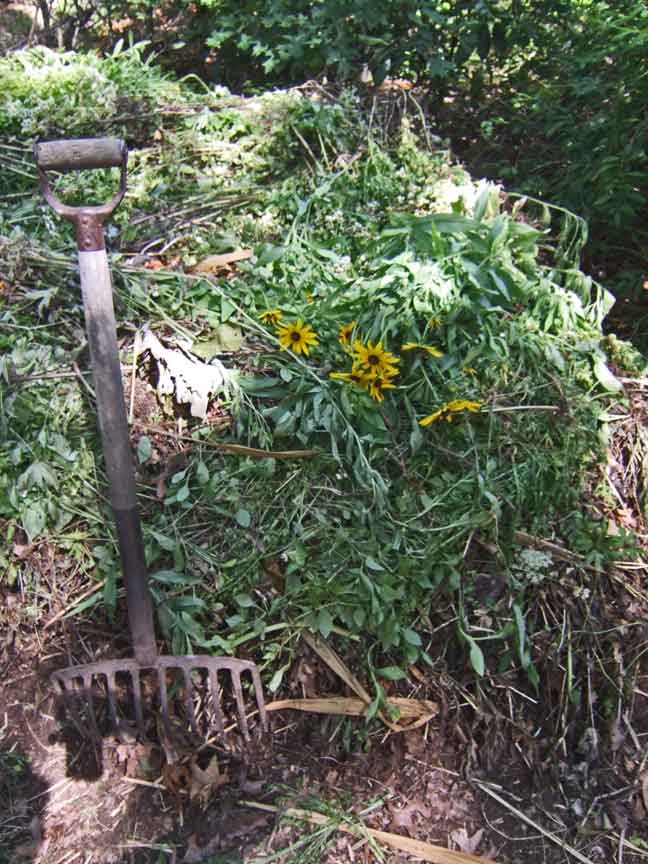 |
| Rudbeckia (var?) hemming in Hollyhocks |
Uprooted next to P. obovata, |
Topping off the growing compost pile |
|
This is where a volunteer becomes a weed, I thought. If the taller & tougher plant weren’t there, why the yarrow & the more elegant rudbeckia would get more of the light & water. My underlying Darwinian philosophy came into play: plants always compete for the light & they use water & nutrients. light & water as much as they can & the rest be damned. That’s where the gardener comes in.
The first clump came away rather easily. I shook off the soil. Then pulled another. The same intruder was bullying the back border, I noticed, taking light & air from my hollyhocks & peonies. Hollyhocks have enough trouble here as it is. Out of so many thousands of seeds imported & planted, only three clumps. Not like Holland where they grow from cracks in the sidewalks & by drain pipes along house walls.
I liberated the hollyhocks & the peonies, trucked the results back to the compost. Note how the metaphors changed once the Darwinian balance tipped & I saw this as rudebeckia & compost fodder.
| Rodgersia & fever few before it seemed a weed |
July lillies from Dolores |
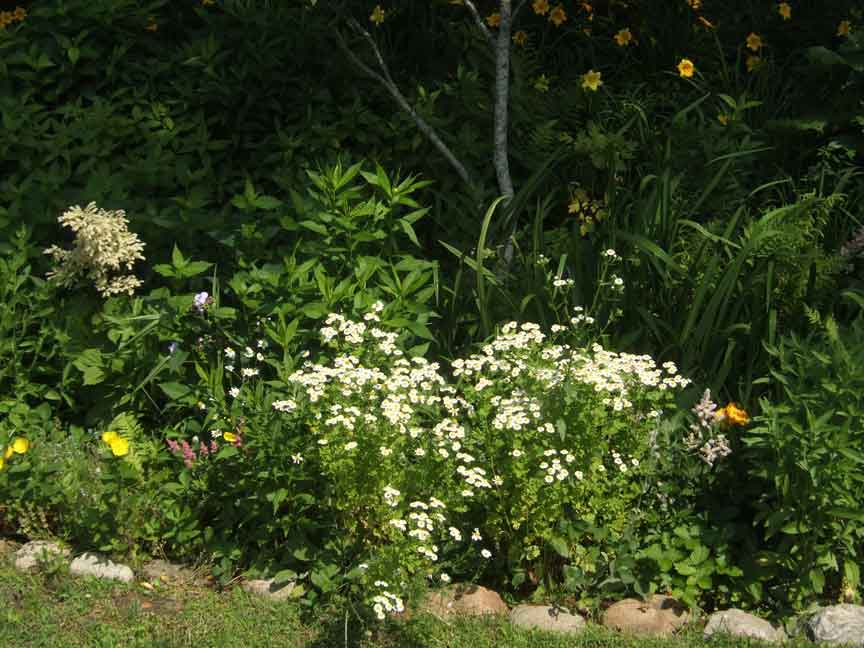 |
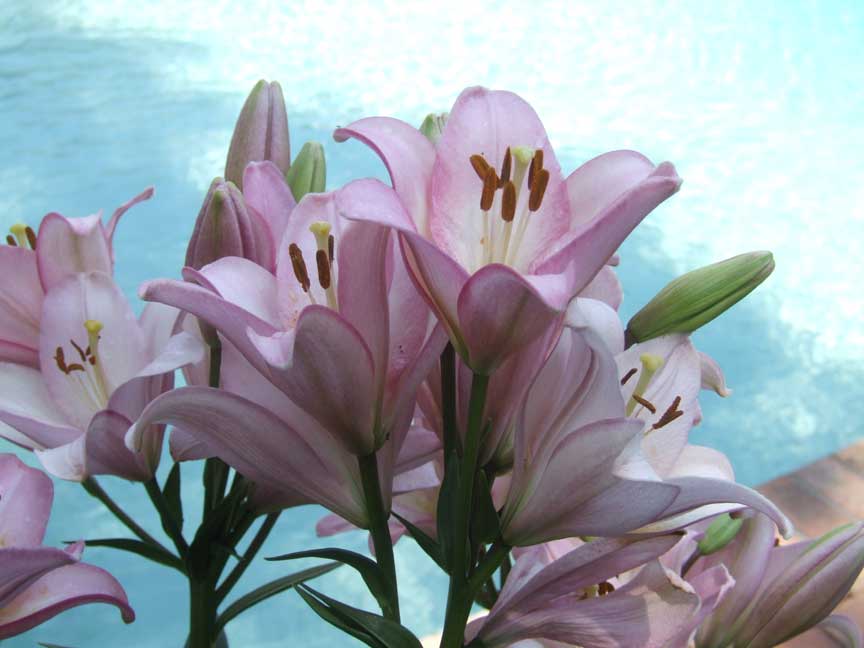 |
View into the upper bog to the witch hazel flanked by phalanxes of phlox & footed by turtleheads: both coming on strong this year & gearing up to bloom towards the end of July.
Today I noticed that the bladder wort out front in the fern oval had come up in a second spot. Now this is a plant that I remember from camp, when I pressed it into my album. But here it seems to get out of hand, in the fern oval competing with ginger & maidenhair ferns & hellebores. One came out with tough, hard roots. The other broke off. I got my favorite adze, with the curved polished wooden handle, & grubbed out the roots. Then I remembered that bladderwort was colonizing also the south rock garden, Kate’s garden, because the pink azalea Kate Cameron gave us tops the bed. With the adze I got the woody roots, but then I noticed the same leaves on a swarm of fresh young plants, so I had to work to get them out: they were overwhelming the alchemila & columbine & sedge.
|
|
Last colony of rudbeckia (var?) self-seeded into lower bog & old compost for new bed.
|
Once started, I realized that the fever few had multiplied out of all proportion & was growing tall at the front of the bed. It blocked the stepping stones & was also choking out columbine & sedge. It was just on the verge of going to seed & there were thousands of seedlings from last year. So I took out the fever few too. Looking around, the chelone looks very abundant & the sensitive fern. They may be the next weeds. Monks hood is spreading too, but I can’t imagine it as a weed, not yet.
Carrying the bundle back to the compost, I realized that fever few had also invaded the rim of the bog, quite overshadowing a mallow & a rare plant that I bought last year, sea mist? In any case, dark green leaves low to the ground & long wirey stems about to produce a burst of little flowers. Liberated that too. Then freed up the Paeonia obovata that was overshadowed by another volunteer rudbeckia.
The compost looks ravishing, ringed by rudbeckia & fever few. Will have to get some horsemanure to fuel the slow fire. Meanwhile, pulling Queen Anne’s lace yesterday I found partridge pea coming up in the lawn, seeded from last year but moved away from its bed next to the katsura. Will have to move it or lose it. Maybe it could go to the front of the new bed I’ve been making along the west side of the deck. Also found some more stray little hostas that could go there too. Still need to place plastic shields on the seedling grape vines & maybe on the Davidia involucrata which has leafed out well, but with a doubled stem. Shall I cut off the gnarled branch? Thinking of scholar rocks & bent pines in Japan & China, I think I’ll allow the gnarl. Maybe someone someday will reflect that philosophy also shaped that wizened old tree. |

